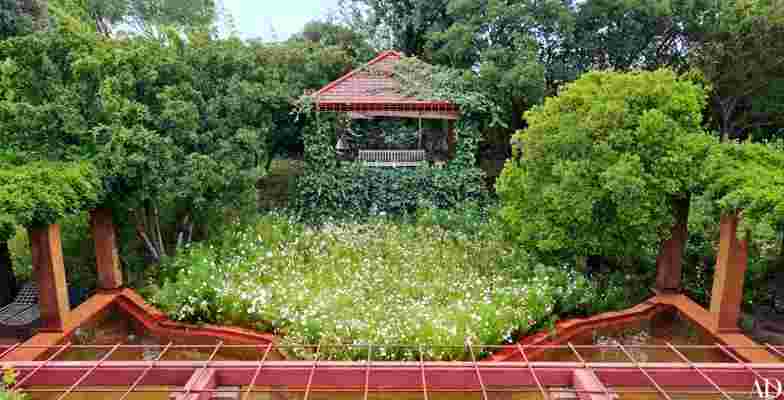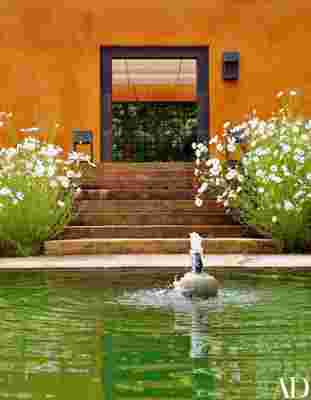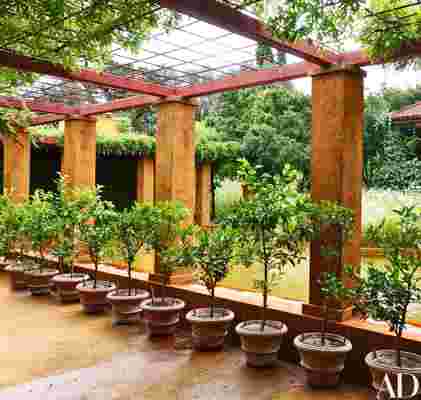Fernando Caruncho’s Famous Green Garden in Madrid
Slowly and relentlessly, the plagues took hold. Five years ago, Fernando Caruncho—the landscape designer known for peaceful gardens rich with archaic allusions and monumental geometries—watched, mystified, as plants withered and leaves became spotted with dark lesions at his Madrid home. The third-of-an-acre haven he had created for his family in the 1980s, at the dawn of his career, was dying. The culprits were anthracnose and Cylindrocarpon , unwittingly introduced when Caruncho proudly brought home specimens of Escallonia macrantha , a South American shrub with red, honey-scented flowers. “It is a fabulous plant,” he says, “but the ones I bought came with infections that destroyed the garden’s immune system.”
For a year Caruncho tried every possible cure, but there was no hope. In despair, he ripped out everything that had flatlined, from the expanses of clipped boxwood to mounds of mature Escallonia that had lapped the garden kiosk like emerald waves. The scarred earth rebuked him: Caruncho himself had sparked the destruction. Now the magical retreat, a youthful triumph he had always assumed would remain the same, was gone. But its structure—the walled enclosures, the mysterious flights of steps, the U-shaped pergola topped with rebar lattice—had not changed. As he soon realized, it was simply waiting for him to cast off his grief and cultivate another incarnation.
“Gardens, like people, have a cycle: They are born, grow, mature, and die,” Caruncho observes. “For the first time in my life, I understood that. I needed to accept the new conditions but return to the original ideas.” As for the wounded acreage, he adds, “I began to understand it more deeply, as when you love someone who has been in your life for a long time.”



Today the garden’s famous austerity has given way to rational exuberance. For the past several years, Caruncho has filled the beds with thousands of white cosmos, an annual whose self-seeded display—what he calls “a moment of splendor,” with a catch in his voice—makes a joyful contrast to the architectural severity that encloses it. Flowers rise up, chest high, swaying in breezes, spreading like great clouds, and offering months of heart- stopping tenderness before vanishing from sight. Eventually other species will replace them. “What plant did people love in the 19th century but is out of fashion? Perhaps I should reintroduce it,” Caruncho muses aloud. “Or maybe Myrtus tarentina , an evergreen native to the Mediterranean.” (The Escallonia debacle has turned him into an ardent champion of native plants.)
“It is possible to have a garden that lasts forever but also is ephemeral,” Caruncho explains, noting that the cosmos’ fragile beauty has affected him deeply—professionally as well as emotionally. “Rebirth is the miracle of gardens, and that is something that will be with me for the rest of my life.”